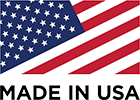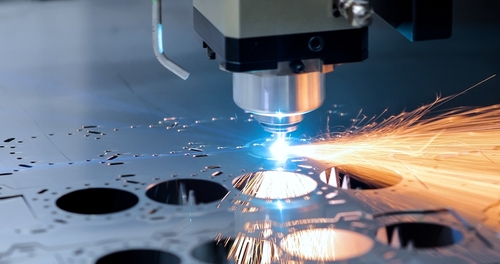As the calendar turns to a new year, the world of tool design is experiencing a dynamic evolution. Technological advancements, growing environmental awareness, and shifting industry needs are reshaping how tools are conceptualized and manufactured. From new tool designs that embrace sustainability to cutting-edge tool and die innovations, this article delves into the trends and innovations defining the future of the industry.
Embracing Technology in Tool Design
Technology is at the heart of modern tool development, transforming both the design process and manufacturing capabilities.
AI-Powered Generative Design
Artificial Intelligence (AI) has emerged as a game-changer in tool design. Leveraging vast datasets, AI algorithms generate optimized geometries that enhance tool performance while minimizing material use. This innovation accelerates the design process, ensuring efficiency without compromising functionality.
Multiaxis Machining for Precision
The adoption of multiaxis machining techniques is revolutionizing tool production. These advanced methods enable the creation of intricate designs with minimal finishing, reducing lead times and costs. Manufacturers using multiaxis machining are achieving unparalleled levels of precision in their new tool designs.
Sustainability Takes Center Stage
In an era of heightened environmental consciousness, sustainable practices are becoming a cornerstone of New Years tool and die designs.
Reuse and Recycling in Tool Manufacturing
Industry leaders are embracing recycling and refurbishing strategies to reduce waste. For example, companies have begun implementing systems to refurbish and reuse worn-out tools, achieving impressive recycling rates. These efforts contribute to a circular economy and lower environmental impact.
Energy-Efficient Processes
Energy efficiency is another key focus area. Electrification of heavy-duty equipment, such as DEWALT’s POWERSHIFT™ line, exemplifies how manufacturers are working to lower carbon emissions. These innovations align with sustainability goals while maintaining high performance standards.
Innovations in Tool and Die Design
The tool and die industry is witnessing a renaissance, driven by the demands of new technologies and industries such as electric vehicles and renewable energy.
Growth in Tooling Demand
Market trends indicate robust growth in tooling demand. By 2025, North American tooling spend is expected to surpass $8.3 billion, fueled by the introduction of new vehicle models and advancements in electric vehicle technology. This surge offers opportunities for innovation in New Years tool and die designs.
Advanced CAD/CAM Software
Modern CAD/CAM software is pivotal in developing complex tool and die systems. These tools provide designers with the ability to visualize intricate geometries, streamline workflows, and ensure accuracy in every stage of production. The result is an efficient and precise manufacturing process that meets today’s high standards.
Key Trends in Tool Design
Emerging trends reflect a blend of functionality, aesthetics, and user preferences. These trends are reshaping the way tools are designed and marketed.
Nature-Inspired and Biophilic Designs
Biophilic design, which incorporates natural elements into tool aesthetics, is gaining traction. This trend aligns with the broader movement towards sustainability, offering tools that are both functional and visually harmonious with the environment.
Minimalism Meets Maximalism
The fusion of minimalism and maximalism in tool design caters to diverse consumer preferences. Whether it’s sleek, understated designs or bold, expressive tools, manufacturers are finding ways to blend these styles to create versatile, innovative products.
Highlighting New Tool Releases
As we enter the new year, manufacturers are unveiling exciting new tools that reflect the latest advancements in design and functionality.
Stihl’s Outdoor Power Equipment Innovations
Stihl is set to release a suite of outdoor power equipment tools, including battery-powered stand-on mowers and advanced hedge trimmers. These products showcase the company’s commitment to performance, user comfort, and sustainability.
Milwaukee’s High-Performance Tools
Milwaukee has announced several groundbreaking tools, such as the M18 Fuel 20-inch Dual Battery Chainsaw and the M12 Fuel Stubby Impact Wrenches Gen II. These tools highlight the brand’s focus on delivering power and efficiency across various applications.
The Role of Automation in Modern Tool Design
Automation is playing a transformative role in tool design and manufacturing, enabling faster production cycles and higher precision.
Robotic Integration
Robotic systems are becoming a staple in tool production facilities. By automating repetitive tasks, robots not only increase efficiency but also reduce human error, resulting in higher-quality tools.
Advanced Inspection Technologies
Technologies such as coordinate measuring machines (CMMs) and laser scanning are streamlining the quality assurance process. These tools enable manufacturers to identify and rectify design issues quickly, ensuring precision and consistency in every product.
Future Prospects for Tool Design
Looking ahead, the future of tool design promises even greater innovation. The convergence of technology, sustainability, and user-centric design will define the next generation of tools.
Collaborative Design Practices
Collaboration between designers, engineers, and end-users will become increasingly important. By incorporating diverse perspectives, manufacturers can develop tools that address real-world challenges and meet user needs effectively.
Customization and Personalization
Advancements in digital manufacturing and 3D printing are opening new avenues for customization. Customers can now access tools tailored to their specific requirements, enhancing both usability and satisfaction.
Conclusion
The new year marks a pivotal moment for the tool design industry. From adopting cutting-edge technologies to prioritizing sustainability, manufacturers are pushing the boundaries of innovation. Whether it’s through new tool designs or New Years tool and die designs, the industry is poised to meet the demands of a rapidly evolving market.
By embracing these trends and focusing on collaboration and customization, tool designers can look forward to a future filled with possibilities. The tools of tomorrow promise to be smarter, greener, and more user-friendly, reflecting the industry’s commitment to progress and sustainability.
Need Metal Stamping in Azusa, CA?
Here at California Tool & Die, we take pride in over 45 years of expertise in producing top-quality metal stampings. Whether you need something from our extensive catalog of over 1,000 stampings for the lamp and lighting industry or a custom solution tailored to your unique specifications, we’re here to help. Our capabilities extend across industries, from furniture and giftware to automotive and medical, and beyond. With a fully staffed, state-of-the-art die shop, we’re equipped to build, maintain, and optimize all of our tooling—and yours too. Let’s collaborate to bring your vision to life. Reach out to us today!




